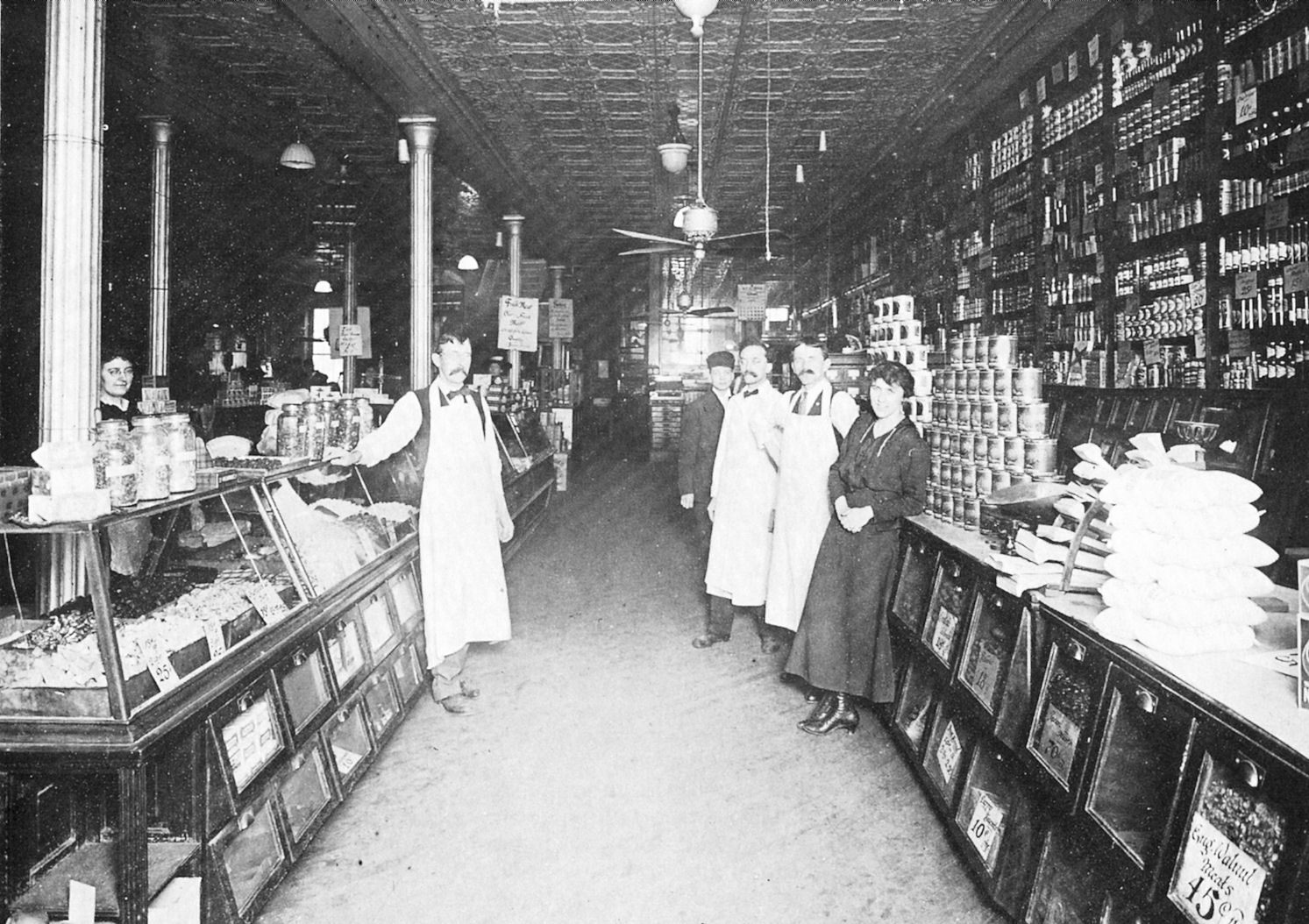In The 1920s, the KKK Hated Minorities, Foreigners, And JC Penney

A Woolworth’s (left) among other shops in Scranton, Pennsylvania, at the turn of the 20th century. (Photo: WikiCommons/Public Domain)
In 1930, E.D. Rivers—state senator, gubernatorial candidate, and Great Titan of the Ku Klux Klan—stood up in front of his constituents in Clarke County, Georgia, and made an impassioned speech. “For the first time in the history of our country,” he said, the nation faced a particular mortal threat. There was an “invasion” of an “alien” that would “take away the freedom of government from the masses.”
Unlike the Klan’s best-known targets, though, this threat was not a group of people. It wasn’t a religious affiliation, a behavior, or a particular political measure. It was chain stores: J.C. Penney, A&P Grocery, Woolworth’s, and other large-scale retail outlets that were changing the face of national commerce.
The 1920s were a boom time for the Klan. William Joseph Simmons had recently restarted the group, named himself Imperial Wizard, and broadened the enemy list to include Catholics, Jews, foreigners, intellectual elites, bootleggers, private schools, and movies. People joined up by the millions, and the Klan became a force in local politics nationwide. Meanwhile, in the aftermath of World War I, chain groceries, apothecaries, and department stores were also experiencing unprecedented growth, adding new branches and spreading quickly across the country.

A Ku Klux Klan rally near Washington, D.C. in 1921. (Photo: Eric Hoffer/Flickr)
As Nancy MacLean reports in Behind the Mask of Chivalry: The Making of the Second Ku Klux Klan, many high-up Klansmen spoke chillingly of these well-stocked newcomers. One expressed concern that “young men of the country… will become ‘automatons,’ with no choice but to work for such monopolies.” Another, during a public lecture, warned that chain stores were “RUINING and CRUSHING DOWN ON THE ENTIRE POPULATION of the world.” They were commonly lumped in with other sources of Klanxiety: Great Titan Rivers spoke of the ills of “atheism, communism, chain stores and companionate marriage” all in the same breath. Meeting minutes from one Oregon chapter describe the banishment of members associated with “the local [JC] Penney store.”
The Klan wasn’t the only group of devoted anti-chainers. As Philip Mattera relates in a white paper “Fighting Chain Stores Past and Present,” all kinds of groups threw their weight behind small businesses and rallied against bigger chains. African-American leaders like Asa Philip Randolph, head of the groundbreaking, largely black union the Brotherhood of Sleeping Car Porters, argued that “colored nor white can withstand the onward march of corporate capital.”
Other unions criticized the stores’ low wages and long hours, and farmers feared that big grocery stores would push produce prices down. Ordinary consumers worried about the chains’ effects on employment, local economies, and community life. According to Mattera, over 400 explicitly anti-chain groups, like Minnesota’s “Break the Chains,” popped up nationwide, along with “several dozen anti-chain newspapers with names such as Chain Store Menace.” Sears even started shipping packages in unmarked wrappers, so that its customers wouldn’t get harrassed.

An independent grocery store in 1920. (Photo: WikiCommons/Public Domain)
But, MacLean argues, when the Klan came out against chains, they were thinking less of “THE ENTIRE POPULATION” and more about their own members. Though some of their arguments sounded large-scale populist, their rationale was anything but. One speaker, MacLean writes, assured his listeners that all large department stores were “principally owned by Jews or foreigners,” and encouraged them to boycott any businesses run by “Jews or Catholics.” Imperial Wizard Simmons, always on the lookout for new recruiting techniques, supported such boycotts.
In keeping with the Klan’s infamous mode, these swipes went beyond hateful rhetoric and embargos. In “The Downfall of Fascism in Black Ankle County,” New Yorker writer Joseph Mitchell reports how he watched the Klan rise and fall in his childhood hometown. This branch of the Klan was built, Mitchell reports, “on a platform of 100-per-cent Americanism, white supremacy in the South, deportation of aliens, purity of womanhood, and eradication of the chain store.” Over the course of a couple of years, its members terrorized local African-American, Jewish, and Irish-owned businesses. “One night,” Mitchell writes, “they broke into a chain grocery in Stonewall, the A&P, and wrecked it.”
According to Mitchell, the Black Ankle County Klan branch shuttered just a couple of years into its existence, after the Irish distillers they targeted tried to blow them up. The second wave of the Klan shrank and then imploded, officially disbanding in 1946 after the federal government sued for $685,305 in back taxes. And the chain store, of course—despite its many and diverse enemies—thrives to this day. With enemies like the KKK, they apparently didn’t need many friends.


















Follow us on Twitter to get the latest on the world's hidden wonders.
Like us on Facebook to get the latest on the world's hidden wonders.
Follow us on Twitter Like us on Facebook